Environmental Racism, Endangered Species and the Biotech Nightmare
The threat of Scripps Florida reveals a new tentacle, as the Hawkeye biotech development plans unfold before us. The Palm Beach County Commission is scheduled to make a final vote on the road expansion, which is needed for the development to move forward, on Tuesday, Oct. 16, 9:30am, at 301 North Olive Ave (6th Floor).
[Help mobilize for this hearing, and educate yourself by reading the information below.]
Last week, the South Florida Times reported that dispute between a developer and residents of a historically black neighborhood in Jupiter has sparked a charge of environmental racism over a proposed new road—the southern extension of Island Way, off Indiantown Road.
No one, thus far, has attempted to refute the charge of racism. But the attorney for the developer was arrogant enough to say residents are wrong in believing the road would run through their Limestone Creek community.
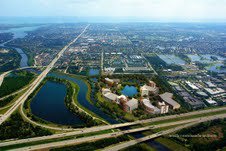
A future image of the Hawkeye plan, this spot shown along the canal is currently quiet historic residential community, neighboring a forest full of biodiversity.
Allen Ciklin, attorney for Hawkeye Unlimited said the road would not run through Limestone Creek but would be “built adjacent to Kennedy Estates.”
Residents at a September 11th County Commission hearing responded loud and clear that the Kennedy Estates neighborhood is part of the 100+ year old Limestone Creek community. It has only become so severed from the northern remnant of this historic community as a result of the racist road-building plans and real estate speculation schemes that now define modern Jupiter.
All four of the “alternate” road plans presented to the County include increasing traffic exponentially (in a neighborhood which currently has no through-traffic), within 50 feet of a park and playground.
————————————–
According to County reports, all four road plans also include a loss of habitat for the endangered gopher tortoise, whose burrows provide homes for other animals including indigo snakes, gopher frogs, foxes, rabbits, quail and burrowing owls.
In Florida gopher tortoises are on the Endangered Species List, categorized as a Threatened Species. Their primary reason for being endangered is a loss of habitat.
This expanded two-lane road would lead to an 82-acre site slated for the Hawkeye biotech development. The plan straddles one of the cleanest and most ecologically important canals in the County: the C-18. Sure, it’s got a boring name now, but this is the waterway which maintains the historic connection between the Loxahatchee Slough and the Loxahatchee River. Further polluting the C-18 will impact one of the wildest and most well-utilized natural recreation resources in the Treasure Coast region.

Would you want to live near a place where laboratory waste could pollute the waterways that you drink from or swim in? This development doesn’t only threaten the Limestone Creek community, it poses direct threats to all North County residents in the Loxahatchee watersheds and those who drink from Jupiter’s well-fields which surround the proposed site.
Exactly what does Hawkeye plan to do there, and how will they deal with bio-hazardous waste? Much like Scripps, no one knows. What we do know is that the site is surrounded by the Town of Jupiter’s well-fields—a primary source of drinking water for the area.
And speaking of Scripps, The Palm Beach/Broward New Times has also published some essential reading for anyone interested in the story of Limestone Creek, the connection to Scripps Biotech, and the history of corporate welfare and crooked dealings, dating back to Mecca Farms. The article is entitled “Scripps Research Institute and the Paving of Black Jupiter” and it starts like this:
If history were clout, the people of Kennedy Estates would wear crowns. But history is bunk, and the black enclave’s residents are mere sand in the gears to the machinery of power.
It continues on: Nestled away in a small grid of streets in West Jupiter, the community is a part of the historic black neighborhood of Limestone Creek, where former slaves and their families migrated south more than 100 years ago in search of work on Palm Beach County’s railways and farms. Through the years, white Jupiter’s luxurious homes and gated communities sprang up around the black settlement, which remained out of sight and out of mind. Black graves lie unmarked where housewives jog past.
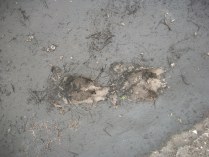
White Tail deer track on the Hawkeye site, indicating that the forest is of value to a the wider ecosystem of the Loxahatchee watershed, which is still largely connected by the C-18 Canal.
Now, however, as a consequence of the arrival of the Scripps Research Institute in northern Palm Beach County, a line of development dominoes threatens to collapse on Kennedy Estates, and West Jupiter’s black community has the full attention of the power elite. The residents wonder if it’s for good or for ill…
After you finish reading the rest of that article, if you are interested in further reading:
- Check out this PDF of Black Jupiter, The Untold Stories, by the Loxahatchee River Historical Society
- Check out a PDF of Limestone Creek: An Oral History, by Sara M. Stout
- Check out the history of Environmental Racism and the Environmental Justice (EJ) movement that has challenged it across the country, in this interview with Robert Bullard, a founder of the EJ movement, conducted by the EF! Journal back in 2000.]
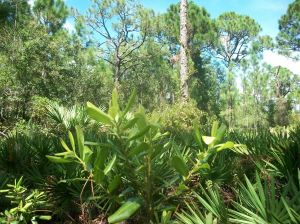
This coastal flatwoods ecosystem that currently exists on Hawkeye proposed biotech plan, pictured above and below, is an increasingly rare habitat. Along with the Briger forest, this spot represents some of the last remaining remnants in South Florida.
If you are interested in helping spread the word, or volunteering to survey the threatened forest and waterway, get in touch!


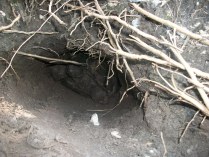
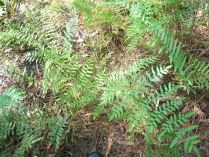
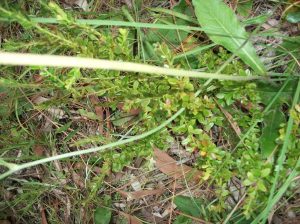
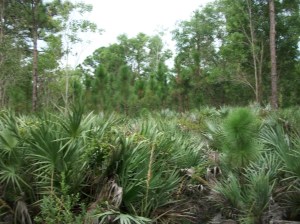
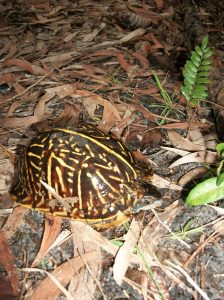
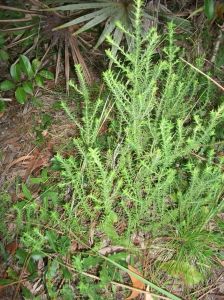
Pingback: Road to new biotech development in Florida stopped | Earth First! Newswire
Pingback: Victory! Road to new biotech development in Florida stopped | Climate Connections
“The Battle Brewing in Limestone Creek � STOP SCRIPPS FLORIDA
IN PALM BEACH” ended up being a extremely great blog post,
. I hope you keep composing and I’ll try to continue reading through! Thanks for your time -Pearl